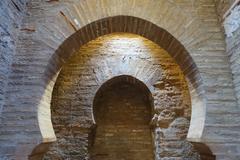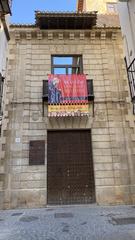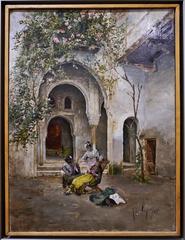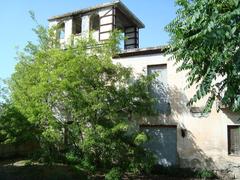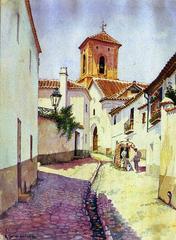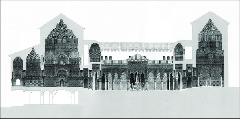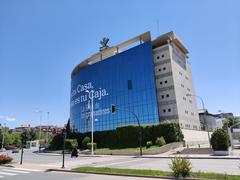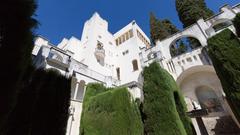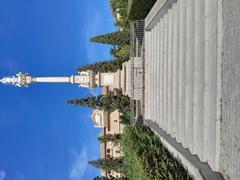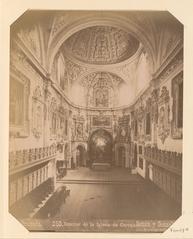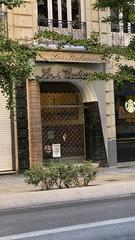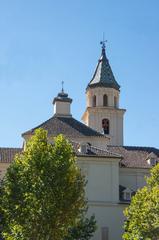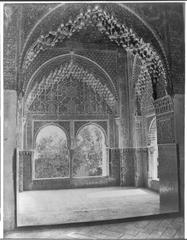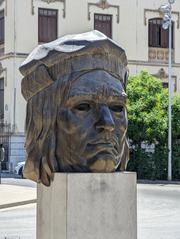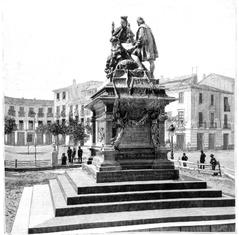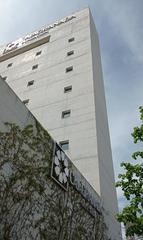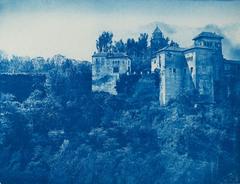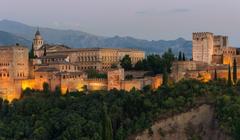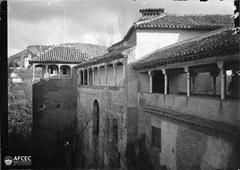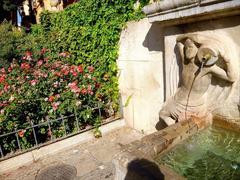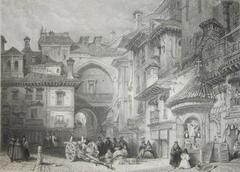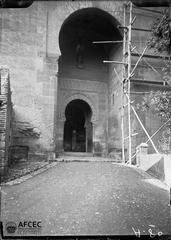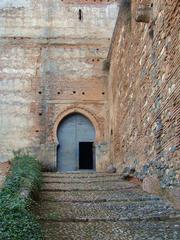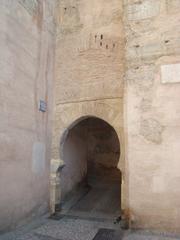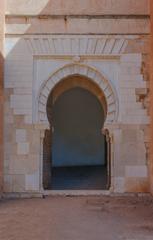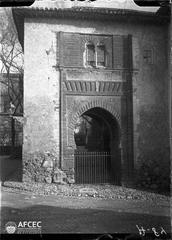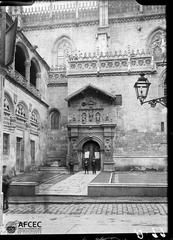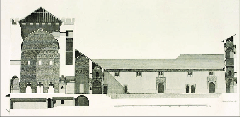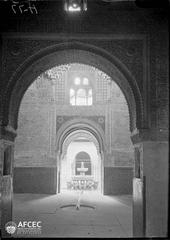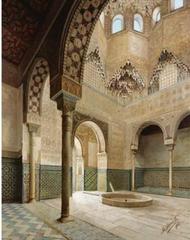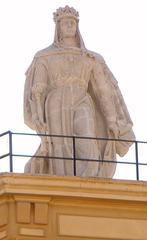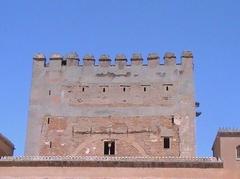Instituto Nacional de Previsión Granada, Spain: Visiting Hours, Tickets, and Historical Sites Guide
Date: 14/06/2025
Introduction
In the vibrant heart of Granada, the Instituto Nacional de Previsión (INP) stands as a testament to Spain’s social and architectural evolution during the 20th century. Founded in 1908, the INP played a pivotal role in the development of Spain’s social welfare system, offering a unique perspective on the city’s modernization alongside its celebrated medieval and Renaissance landmarks. While the Alhambra and Granada Cathedral attract the bulk of visitors, the INP reveals Granada’s transformation into a modern urban center, blending rationalist and functionalist architecture with enduring civic purpose.
This comprehensive guide explores the INP’s origins, architectural features, visitor information, and its integration into Granada’s urban landscape. Whether you are a history enthusiast, architecture aficionado, or cultural traveler, the INP provides a fascinating window into Spain’s social progress. For official updates and planning resources, consult the Granada Municipal Tourist Office and Spain.info (What Granada, Love Granada).
Table of Contents
- Brief History of the INP
- Architectural Style and Features
- Urban Context and Cultural Role
- Visiting Hours and Ticket Information
- Accessibility
- How to Get There
- Visitor Experience and Etiquette
- Nearby Attractions
- Frequently Asked Questions (FAQ)
- Conclusion and Further Resources
Brief History of the INP
Established in 1908 as part of a nationwide initiative, the Instituto Nacional de Previsión became a cornerstone of Spain’s early welfare state, managing social insurance, retirement funds, and workplace protections. Granada’s INP office functioned as a regional hub, reflecting the city’s emergence as an administrative center during the 20th century. Its history mirrors the evolution of social protections in Spain, from the early reforms of the Second Republic through the Francoist era and into the country’s democratic transition (What Granada, Granada History).
Architectural Style and Features
The INP building exemplifies Spain’s rationalist and modernist tendencies of the mid-20th century. Characterized by clean lines, minimal ornamentation, and the use of reinforced concrete, steel, and glass, the building’s design reflects both International Style principles and a commitment to efficient public service (ArchDaily).
Key features include:
- Symmetrical façade with expansive horizontal windows and balconies
- Modular interior layout for flexible office use
- Cantilevered balconies and sheltered walkways
- Open plazas inviting public engagement
- Durable, low-maintenance materials
The intent was to project efficiency, transparency, and modernity—values aligned with the INP’s role in providing social security services.
Urban Context and Cultural Role
Located in Granada’s administrative core, the INP is part of the city’s tapestry of civic, commercial, and residential spaces. Its construction coincided with Granada’s post-war modernization and university expansion, symbolizing a shift from economic stagnation to revitalization (Love Granada). The building’s proximity to major streets and plazas reflects the integration of modern public services within Granada’s historic urban fabric.
Beyond its administrative function, the INP is a symbol of democratized social rights and the growth of Spain’s welfare state, fostering urban stability and improved living standards (Granada Social Services).
Visiting Hours and Ticket Information
- Location: [Insert Exact Address], Granada, Spain
- Regular Hours: Primarily open to the public during administrative office hours: Monday to Friday, 9:00 AM to 2:00 PM. Closed on weekends and public holidays.
- Admission: Free entry to the exterior and public spaces; interior access is often limited to special events or guided tours.
- Guided Tours: Occasionally available during heritage events or by arrangement; advance booking is recommended (INP Granada Visiting Hours).
For the latest information, refer to the Granada Municipal Tourist Office or the Provincial Tourist Board.
Accessibility
- Wheelchair Access: Ramps and elevators are available; some older sections may be less accessible.
- Assistance: Audio guides and brochures in Spanish, English, and French. Contact the administration in advance for specific needs.
- Transport: Multiple public bus lines (e.g., 3, 6, 9) stop nearby; limited parking, so public transport is recommended (Granada Public Transport).
How to Get There
- By Public Transport: Bus stops within a 5-minute walk.
- By Car: Parking is limited; nearest facility at [Insert Parking Facility Name].
- On Foot: Easily reachable from major landmarks like Granada Cathedral and the Alhambra.
Visitor Experience and Etiquette
What to Expect:
- Admire the INP’s façade, plazas, and, during special events, interior features such as marble staircases and period woodwork.
- Occasional exhibits highlight Spain’s social security history.
Visitor Etiquette:
- Maintain quiet and respectful behavior; the building remains operational.
- Dress modestly and comply with photography restrictions in sensitive areas.
- Group visits require advance booking.
- Always check in advance for event schedules and access limitations.
Nearby Attractions
Make the most of your visit by exploring nearby sites:
- Granada Cathedral: A Renaissance masterpiece in the city center.
- Royal Chapel: Burial site of Catholic Monarchs.
- Albaicín District: Historic Moorish quarter.
- Plaza Nueva: Lively square with cafes and shops.
These attractions are within easy walking distance, allowing for a comprehensive exploration of Granada’s history (Granada Info).
Frequently Asked Questions (FAQ)
Q: What are the INP visiting hours?
A: Generally weekdays, 9:00 AM – 2:00 PM; public access is limited and best during special events.
Q: Is there an admission fee?
A: No, admission is free during public events; regular tourist access is limited.
Q: Is the building wheelchair accessible?
A: Partial accessibility is available; contact in advance for details.
Q: Can I take photographs inside?
A: Permitted in public areas; restrictions in administrative zones.
Q: Are guided tours available?
A: Sometimes, during special events or by prior arrangement.
Conclusion and Further Resources
The Instituto Nacional de Previsión is a vital piece of Granada’s 20th-century narrative, representing the city’s journey toward social modernity and architectural innovation. While access is typically limited to special events, the INP’s exterior and plaza are always worth visiting for those interested in Spain’s social and architectural history. Combine your visit with other nearby sites for a richer experience.
For the latest updates, event schedules, and travel tips, consult the Granada Municipal Tourist Office, Spain.info, and the Audiala app. Explore related guides for deeper insights into Granada’s historical and architectural treasures.

